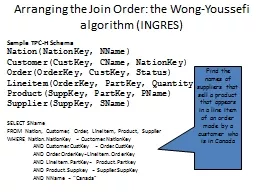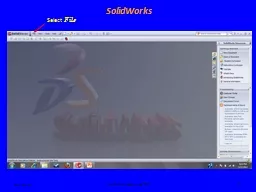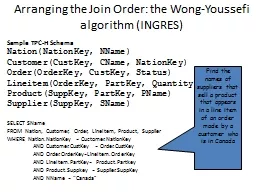PPT-Arranging the Join Order: the Wong-Youssefi algorithm (INGR
Author : pasty-toler | Published Date : 2015-12-04
Sample TPCH Schema Nation NationKey NName Customer CustKey CName NationKey Order OrderKey CustKey Status Lineitem OrderKey PartKey Quantity Product
Presentation Embed Code
Download Presentation
Download Presentation The PPT/PDF document "Arranging the Join Order: the Wong-Youss..." is the property of its rightful owner. Permission is granted to download and print the materials on this website for personal, non-commercial use only, and to display it on your personal computer provided you do not modify the materials and that you retain all copyright notices contained in the materials. By downloading content from our website, you accept the terms of this agreement.
Arranging the Join Order: the Wong-Youssefi algorithm (INGR: Transcript
Download Rules Of Document
"Arranging the Join Order: the Wong-Youssefi algorithm (INGR"The content belongs to its owner. You may download and print it for personal use, without modification, and keep all copyright notices. By downloading, you agree to these terms.
Related Documents














